Planning a fun trip or an exciting getaway starts with getting your budget in order.
This post may contain affiliate links. If you make a purchase or booking through one of our links, we may earn a small commission. As an Amazon Associate, I earn from qualifying purchases. The content on this website was created with the help of AI.
This guide will break down, step by step, how to create a travel budget that keeps your spending on track, helps you make the most of your money, and lets you enjoy your trip without the stress of unexpected expenses.
Key Takeaways
- Learn why creating a travel budget is key to having a great trip without breaking the bank.
- Break your budget down into the essentials: transportation, accommodations, daily expenses, and fun activities.
- Check out the cost of living at your destination so you can plan your spending more accurately.
- Set a daily spending limit and keep a little extra aside for unexpected costs or emergencies.
- Use handy budgeting apps and tools to keep track of your expenses and stay on top of your budget.
1. Why Travel Budgeting Matters
Figuring out how much you can spend on your trip isn’t just about the numbers – it’s actually key to having an awesome time!
When you plan your budget carefully, you unlock a bunch of amazing things that’ll make your travels even better.
Benefits of Organized Travel Budgeting
A good travel budget is your secret weapon for keeping your finances in check while you’re on the road!
It helps you spend your money wisely, so you don’t overspend and end up stressing about money.
With a plan, you can relax and truly enjoy exploring your destination without constantly worrying about how much you’re spending.
Common Budget Planning Mistakes to Avoid
- Underestimating costs: It’s easy to forget about all the little things – like getting around and doing fun activities. This can quickly blow your budget.
- Lack of flexibility: Sticking to a super strict budget can be tough, especially if things don’t go exactly as planned. Unexpected costs or last-minute changes can really stress you out.
- Impulse spending: Unplanned purchases and spontaneous decisions can quickly deplete your budget if not carefully managed.
Long-term Financial Benefits of Travel Budgeting
Making a habit of budgeting for your travels has fantastic benefits that go way beyond just your trip! It helps you save money, avoid debt, and feel great about your finances.
When you prioritze travel budgeting, you’re not just gearing up for your next adventure—you’re investing in your financial future.
| Benefit | Description |
|---|---|
| Organized budgeting | It helps you manage your money wisely and stay on track without overspending. |
| Financial benefits | It helps you build savings, steer clear of debt, and keep your finances in great shape for the long haul. |
“Proper travel budget planning is the key to unlocking a stress-free and financially responsible journey.”
2. Calculate Your Total Travel Fund
Planning your trip starts with figuring out how much you’ll need to make it happen. This means estimating the total cost of your vacation, including your destination, how long you’ll be there, and the kind of travel experience you’re aiming for.
By getting a clear idea of your travel fund, you can set savings goals that make your dream getaway a reality.
Start by checking out the average costs for your destination—think transportation, accommodations, daily expenses, and fun activities. Sites such as Trip.com and Kiwi.com are great for getting a sense of what to expect.
Then, consider how long you’ll be staying. The longer the trip, the more you’ll need to budget. Multiply the number of days by your daily spending limit to get a solid estimate of your total travel fund. With these steps, you’ll be well on your way to planning a trip you can truly enjoy!
| Travel Expense Category | Estimated Cost |
|---|---|
| Airfare | $800 |
| Accommodations | $150 per night x 7 nights = $1,050 |
| Local Transportation | $30 per day x 7 days = $210 |
| Food and Dining | $50 per day x 7 days = $350 |
| Activities and Entertainment | $100 per day x 7 days = $700 |
| Total Estimated Travel Fund | $3,110 |
By considering these factors and creating a detailed budget, you can determine your total travel fund and work towards building your vacation savings.
Remember to account for unexpected expenses and allocate a buffer in your budget to ensure a stress-free and enjoyable trip.
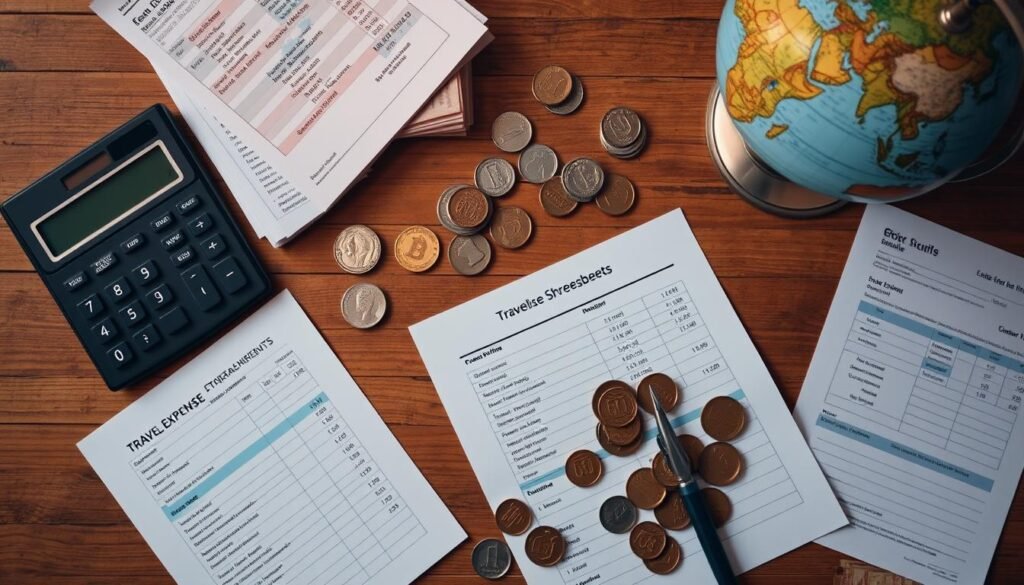
3. Identify Essential Budget Components
To plan an awesome trip, you need to think about all the costs that add up – from flights and hotels to everyday expenses like food and fun activities.
It’s important to carefully consider each part of your budget to make sure your trip goes smoothly and you don’t overspend.
Transportation Costs and Options
Getting to and from your destination is a big part of your travel budget. Whether you’re flying, driving, or using public transportation, it’s important to look into your options and their costs.
Things like airfare, gas prices, car rentals, and local transit fares can add up quickly, so doing a little research can help you find the best fit for your budget.
Accommodation Expenses
Where you stay can have a big impact on your travel budget. Whether it’s a luxury hotel or a budget-friendly hostel, prices can vary a lot.
Think about things like location, amenities, and how long you’ll be staying to get a clear idea of how much your accommodations will cost.
Daily Living Costs
Don’t forget to include your daily expenses in your travel budget! Things like food, groceries, and everyday essentials can add up.
Check out the average cost of living at your destination to get a better idea of what you’ll need to cover your daily spending.
Entertainment and Activities
Exploring local culture, attractions, and entertainment is what makes a trip truly memorable. Whether it’s museum visits, sightseeing tours, dining out, or fun activities, set aside part of your budget so you can fully enjoy everything your destination has to offer.
By thinking through all these key details, you can build a travel budget that sets you up for a stress-free and enjoyable trip. With a solid plan in place, you’ll be ready to make your dream vacation a reality without overspending.
4. Research Your Destination’s Cost of Living
Crafting a comprehensive travel budget requires understanding the local cost of living at your chosen destination. This is a crucial step in the destination cost research process, allowing you to make informed decisions and avoid unpleasant surprises during your trip. By analyzing typical travel expense analysis and local prices, you can better prepare your finances and maximize the value of your travel investment.
To research the cost of living at your destination, start by exploring online resources that provide up-to-date information on the prices of goods, services, and experiences in the area. Websites like Numbeo, Expatistan, and Payhike offer detailed cost-of-living comparisons, covering everything from rent and groceries to transportation and entertainment.
- Examine the average costs for common items, such as a meal at a mid-range restaurant, a ride on public transportation, or a visit to a popular tourist attraction.
- Look into the exchange rate between your home currency and the local currency, as this can significantly impact your purchasing power and daily spending.
- Consider the potential impact of seasonal fluctuations, as prices may vary depending on the time of year you plan to visit.
By thoroughly researching the cost of living at your destination, you can create a more accurate and realistic travel budget, ensuring that your trip aligns with your financial goals and provides the best possible value for your money.
“Knowing the cost of living at your destination is key to building a travel budget that sets you up for a stress-free and enjoyable trip.”

5. Set Daily Spending Limits
Establishing a daily travel budget is crucial for maintaining financial control during your trip. By setting spending limits, you can ensure that your daily expenses align with your overall travel budget, preventing overspending and unexpected financial challenges.
Regular Expenses vs. Splurge Items
Start by categorizing your expenses into two groups: regular daily costs and discretionary splurge items. Regular expenses may include transportation, accommodation, meals, and basic necessities. Splurge items could be special experiences, luxury purchases, or indulgences that you want to enjoy during your trip. Allocating a portion of your daily budget for both will help you strike a balance between necessary spending and memorable experiences.
Emergency Fund Allocation
- Set aside a dedicated emergency fund within your daily travel budget to cover unexpected expenses, such as medical emergencies, lost or stolen items, or sudden changes in travel plans.
- The size of your emergency fund should be based on the destination, length of your trip, and your personal comfort level with financial risk.
- Aim to allocate between 10-20% of your daily budget for emergency funds to ensure you are prepared for any unexpected situations.
Currency Exchange Considerations
When traveling to a foreign destination, be mindful of currency exchange rates and fees. Research the best methods for accessing local currency, such as using ATMs, exchanging money at banks, or utilizing travel credit cards with favorable exchange rates and minimal fees. Factoring these costs into your daily spending limits will help you manage your budget more effectively.
By setting daily spending limits, allocating funds for emergencies, and considering currency exchange factors, you can gain better control over your travel expenses and enjoy your trip with peace of mind.
6. Use Budget Tracking Tools & Apps
Staying on top of your travel expenses can be a daunting task, but with the right tools and apps, you can effortlessly monitor your spending and keep your budget in check. From intuitive travel budget apps to versatile expense tracking tools and comprehensive financial management software, there’s a wide range of solutions to choose from.
One popular option is the Mint app, which syncs your bank accounts, credit cards, and investments to provide a holistic view of your finances. With its user-friendly interface and automatic categorization of expenses, Mint makes it easy to track your travel spending and stay within your budget.
Another excellent choice is Trail Wallet, a dedicated travel budget app that allows you to log expenses, monitor your spending, and generate detailed reports. Its customizable categories and real-time currency conversion features make it a valuable tool for globetrotters.
- YNAB (You Need a Budget): A powerful financial management software that helps you create a comprehensive travel budget, track expenses, and prioritize your spending.
- Toshl Finance: A sleek and intuitive expense tracking tool with features like automated currency conversion, location-based spending analysis, and shareable expense reports.
- Splitwise: A collaborative app that simplifies shared expenses, making it ideal for group travel where costs need to be evenly distributed.
Regardless of the travel budget apps, expense tracking tools, or financial management software you choose, the key is to find a solution that aligns with your travel style and budgeting needs. By leveraging these powerful tools, you can take the guesswork out of your travel finances and enjoy your adventures with peace of mind.
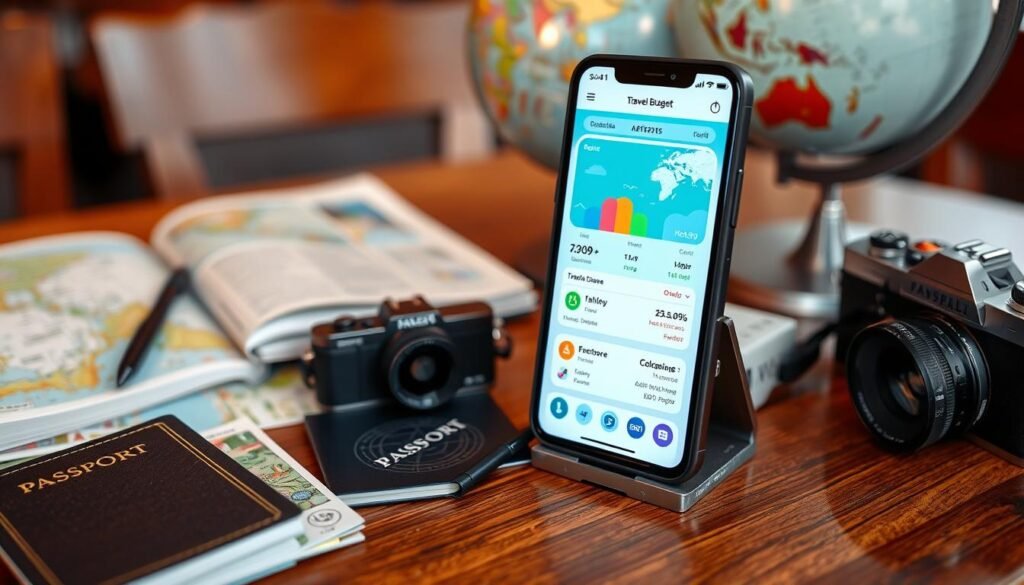
7. Incorporate Money-Saving Strategies
Traveling can be an exhilarating experience, but it can also be costly. Fortunately, there are various money-saving strategies that cater to different travel styles. Whether you’re a budget-conscious explorer or seeking a luxurious getaway, these tips can help you maximize your travel funds and create a more enjoyable journey.
Budget Travel Tips
For the budget-minded traveler, there are numerous ways to stretch your dollars and still have an unforgettable experience. Some key strategies include:
- Researching and booking accommodations like hostels, Airbnb rentals, or budget hotels to save on lodging costs.
- Utilizing public transportation, walking, or renting bicycles instead of expensive taxis or rental cars.
- Seeking out free or low-cost activities, such as exploring local parks, museums with free admission days, or participating in free walking tours.
- Packing snacks and preparing some meals on your own to cut down on dining expenses.
- Monitoring exchange rates and using local currency to avoid excessive fees when making purchases.
Luxury Travel on a Budget
Savvy travelers can also enjoy a touch of luxury without breaking the bank. Consider these money-saving tips for a more upscale experience:
- Booking flights and accommodations during off-peak seasons or shoulder seasons to take advantage of lower rates.
- Utilizing loyalty programs, credit card rewards, and travel rewards points to offset the cost of flights, hotels, and other expenses.
- Seeking out all-inclusive or package deals that bundle flights, accommodations, and activities at discounted rates.
- Researching and taking advantage of discounts or promotions offered by airlines, hotels, and tour operators.
- Opting for mid-range or boutique hotels instead of the most expensive luxury properties.
Group Travel Cost Distribution
Traveling in a group can be an excellent way to save on costs, but it requires careful planning and coordination. Here are some strategies to distribute expenses fairly among group members:
| Expense | Suggested Cost Distribution |
|---|---|
| Accommodation | Split the total cost evenly among all group members |
| Transportation | Divide the cost based on the number of passengers per vehicle or mode of transport |
| Meals | Each person pays for their own meals, or rotate who covers the group’s meals |
| Activities and Excursions | Decide on a fair way to share the costs, such as splitting evenly or based on individual participation |
By employing these budget-friendly strategies, travelers can enjoy their desired experiences while keeping their finances in check. Whether you’re seeking a more modest adventure or a touch of luxury, there are options to fit your travel style and budget.
8. Plan for Hidden and Unexpected Expenses
Crafting a comprehensive travel budget requires more than just accounting for the obvious costs. Savvy travelers understand the importance of anticipating and planning for hidden travel costs and unexpected expenses that can easily derail even the most meticulously planned itinerary.
One of the key aspects of contingency planning is identifying potential hidden costs that may arise during your trip. These can include baggage fees, currency exchange charges, gratuities, and even unexpected medical or emergency expenses. By proactively researching and allocating funds for these potential outlays, you can avoid financial surprises and maintain control over your travel budget.
- Research common hidden travel costs associated with your destination, such as airport taxes, visa fees, and local transportation surcharges.
- Anticipate unexpected expenses like medical emergencies, flight delays, or unforeseen activities that may arise during your trip.
- Allocate a portion of your travel budget as an emergency fund to cover any unexpected expenses that may crop up.
| Hidden Expense | Average Cost | Contingency Planning Tips |
|---|---|---|
| Baggage Fees | $25-$100 per bag | Research airline baggage policies and pack light to avoid fees. |
| Currency Exchange Charges | 2-5% of transaction value | Use credit cards with no foreign transaction fees and avoid airport currency exchanges. |
| Travel Insurance Deductibles | $250-$500 | Review your insurance policy and plan for potential out-of-pocket costs. |
By anticipating and planning for hidden travel costs and unexpected expenses, you can ensure your travel budget remains intact and your trip unfolds as planned. Effective contingency planning is the key to a stress-free and financially responsible travel experience.
9. Factor in Seasonal Considerations
When planning your travel budget, it’s crucial to consider the impact of seasonal factors and the timing of your trip. Seasonal travel costs can fluctuate significantly, and understanding the differences between peak and off-peak pricing can help you save money and maximize your travel experiences.
Peak vs. Off-Peak Travel Costs
Travel during peak seasons, such as holidays, school breaks, and summer months, often comes with higher prices for flights, accommodations, and even activities. On the other hand, traveling during off-peak seasons can result in substantial savings. For example, booking a trip in the shoulder season or during the low season can lead to discounted rates on flights and hotel stays.
To save on seasonal travel costs, it’s essential to research the pricing trends for your desired destination. Pay attention to the peak and off-peak seasons, and adjust your travel dates accordingly to take advantage of the lower prices.
Weather Impact on Budget
The weather can also have a significant impact on your travel budget. Certain destinations may experience extreme weather conditions during specific times of the year, which can affect the cost of transportation, accommodations, and activities. For instance, visiting a tropical destination during the rainy season may require additional expenses for rain gear, indoor activities, or even unexpected flight or hotel cancellations.
By researching the typical weather patterns and potential weather-related disruptions for your chosen destination, you can better plan for any additional expenses and adjust your budget accordingly. This can help you avoid unexpected costs and ensure a smoother and more enjoyable travel experience.
| Seasonal Considerations | Impact on Travel Costs |
|---|---|
| Peak Season (Holidays, School Breaks, Summer) | Higher prices for flights, accommodations, and activities |
| Off-Peak Season (Shoulder Season, Low Season) | Discounted rates on flights, hotel stays, and more |
| Extreme Weather Conditions | Additional expenses for transportation, accommodations, and activities |
By understanding the impact of seasonal factors and weather on your travel budget, you can make informed decisions and plan your trip to maximize your savings and enjoyment.
10. Build a Pre-Trip Savings Plan
Creating a travel savings plan is a crucial step in ensuring your vacation fund is fully stocked before your next big trip. By strategically setting financial goals and implementing smart saving tactics, you can maximize your travel budget and minimize financial stress during your travels.
One effective strategy is to establish a dedicated travel savings account. Separating your travel funds from your regular checking or savings accounts can help you stay on track and avoid the temptation to dip into your travel money for unexpected expenses. Automating your savings by setting up recurring transfers from your main account can also make the process easier and more consistent.
- Set specific, measurable savings goals for your upcoming trip
- Identify opportunities to cut back on non-essential expenses and redirect those funds to your travel savings
- Explore side hustles or freelance work to boost your income and accelerate your savings
- Take advantage of employer-sponsored retirement plans or other investment vehicles to grow your travel fund over time
The key to building a successful travel savings plan is to make it a priority and stick to your plan. By being intentional about your vacation fund strategies and maintaining discipline, you can ensure your pre-trip financial preparation sets you up for a stress-free and unforgettable travel experience.
“The best way to predict the future is to create it.” – Peter Drucker
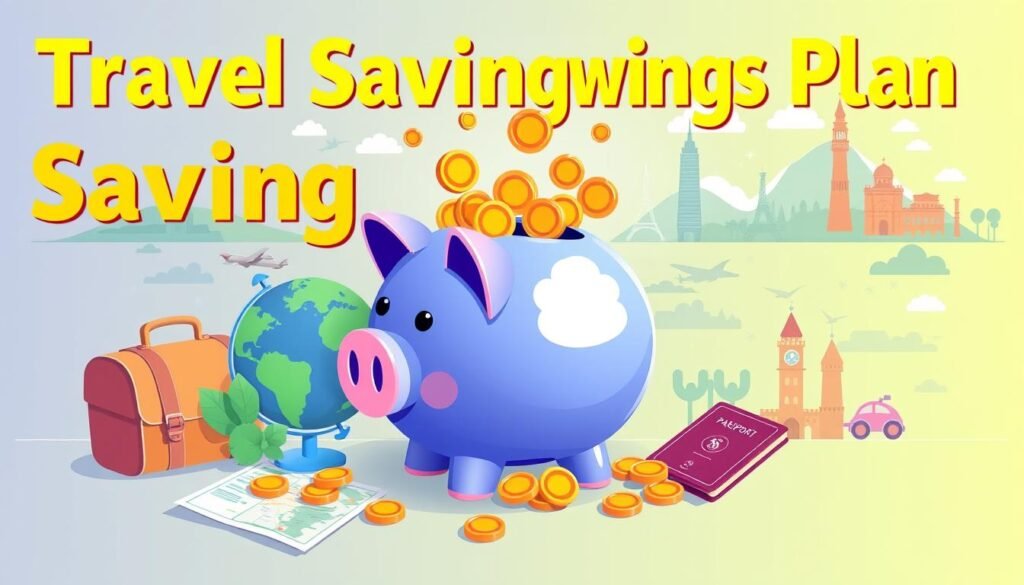
Remember, saving for travel is an investment in your personal growth and well-being. By taking the time to build a comprehensive travel savings plan, you’re setting yourself up for a rewarding and fulfilling journey ahead.
Conclusion
In the end, creating and managing a travel budget is an essential step in ensuring a successful, stress-free vacation. By understanding the importance of financial planning, identifying essential cost components, and leveraging money-saving strategies, travelers can embark on their adventures with confidence and peace of mind.
Budgeting for travel not only helps to avoid unexpected financial burdens but also allows individuals to make the most of their vacation funds. From tracking expenses to building pre-trip savings, the strategies outlined in this guide can help travelers of all budgets plan a memorable and budget-conscious trip.
Ultimately, a well-planned travel budget is the cornerstone of a fulfilling and financially responsible vacation. By embracing the principles of travel budget management, individuals can focus on creating lasting memories, exploring new destinations, and enjoying the journey without the stress of financial worries.

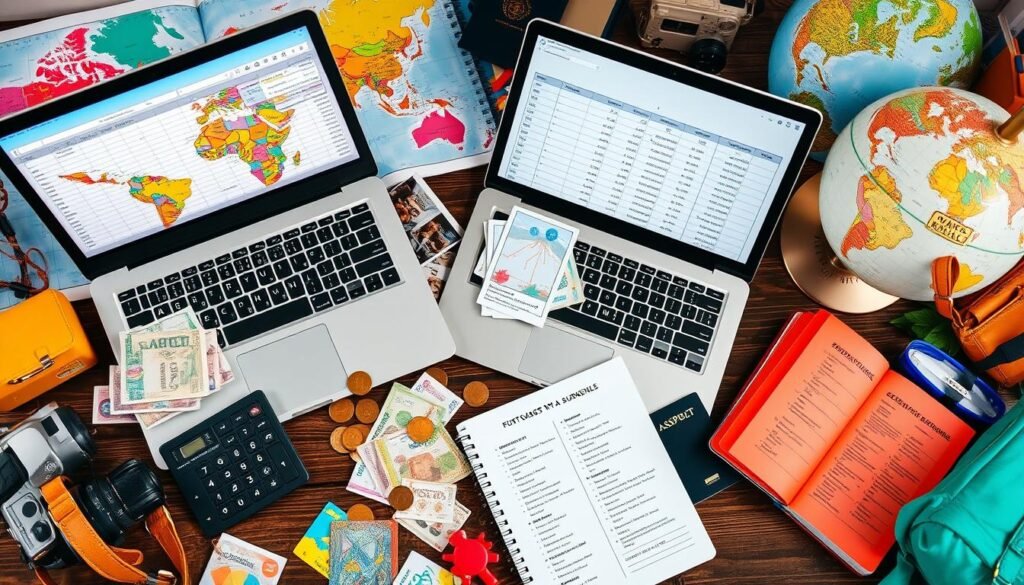
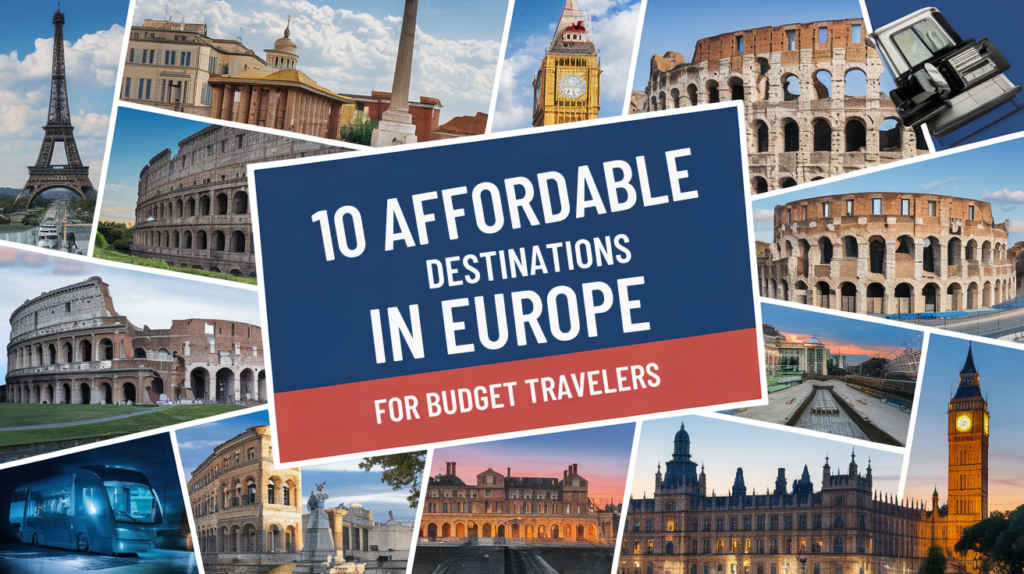
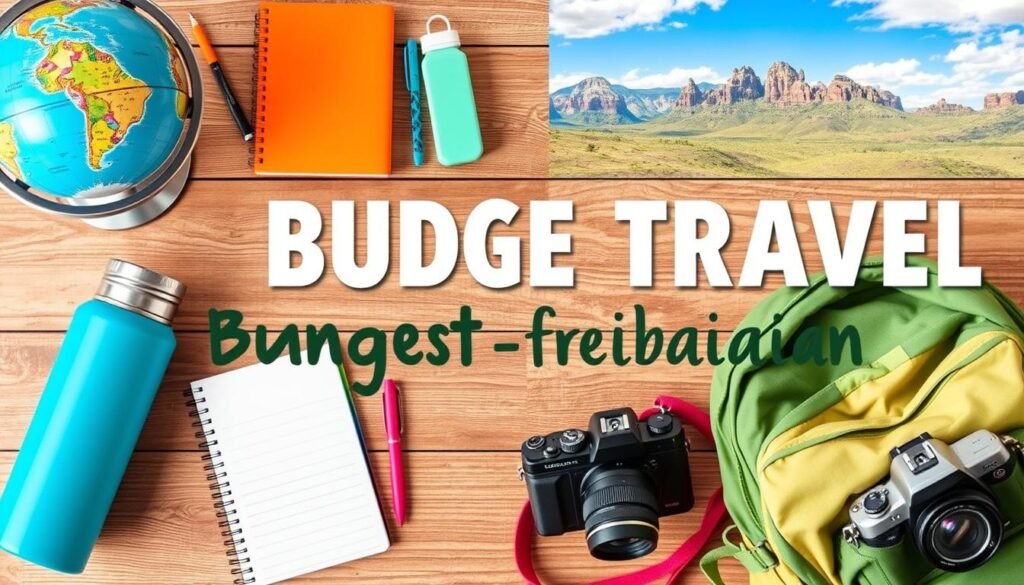
Hiii! Great tips, thanks for sharing! 😊 Here’s another travel tip: I recommend “ATM Fee Saver” – the travel app helps you find ATMs with no or low fees for withdrawing money. It also locates Forex and exchange spots. I use it on every trip and it saved me tones of money!
Thanks for the app. I’ll have to check it out.